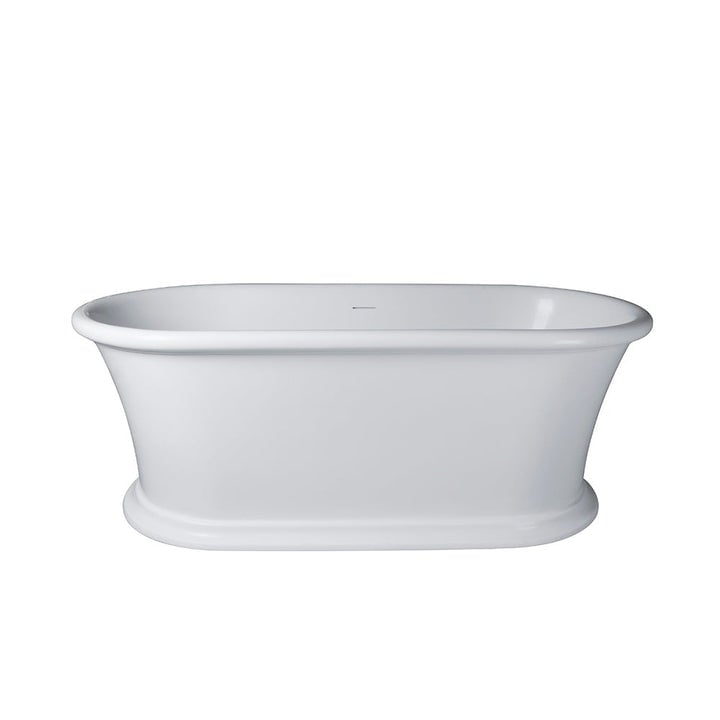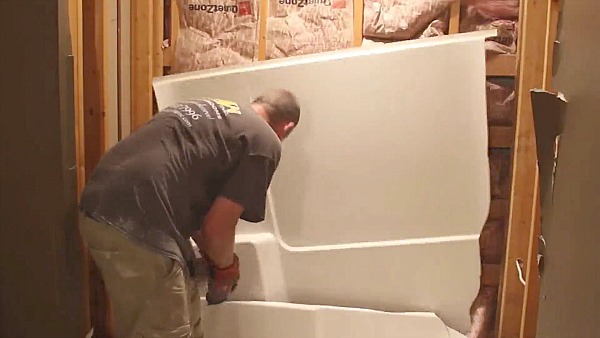Plumbing Basics: Before Bathtub Installation
Plumbing Basics: Before Bathtub Installation
Blog Article
Here below you can locate lots of decent guidance in regards to Installing A Bathtub.

Mounting a bath tub isn't precisely brain surgery, yet it does call for strong plumbing, woodworking, as well as often, tiling abilities. Changing an old bath tub with a brand-new one is additionally a reasonably tough task. If the old bathtub is conveniently accessible, the project can relocate quickly; if you have to open a wall to eliminate the old tub and position the brand-new bath tub, the job is much harder. In either case, the project is within a residence handyman's abilities, although you will require a helper to move out the old bathtub and also set in the new one. See to it you have actually qualified on your own for the task and are comfortable trying it. Instead of hiring a contractor to take control of a halfway-completed project, it is far better to think about employing one prior to you begin. Opportunities are you might need a specialist plumber to make tube links.
This write-up will help you install a new tub in your restroom if you have currently gotten a brand-new bathtub and also do not need to change the arrangement of your previous water system pipelines.
Your devices and product list should make up the following:
Removing Old Touches
If you require to change old taps with new ones as a part of your installation, after that the first thing you need to do is disconnect the water. After doing so, activate the faucets to drain any water remaining in the system. The procedure of getting rid of the existing faucets can be rather problematic due to the limited accessibility that is usually the situation.
Make use of a basin wrench (crowsfoot spanner) or a tap device to undo the nut that connects the supply pipelines to the taps. Have a cloth all set for the staying water that will certainly originate from the pipes. Once the supply pipelines have been gotten rid of, use the very same tool to loosen up the nut that holds the taps onto the bath/basin. You will certainly need to quit the single faucets from transforming throughout this process. When the faucets have actually been eliminated, the holes in the bath/basin will need to be cleaned of any old sealing compound.
Before carrying on to fit the brand-new taps, compare the pipe connections on the old faucets to the brand-new faucets. If the old faucets are longer than the new taps, after that a shank adapter is needed for the new faucets to fit.
Suitable New Touches
If the tails of the new taps are plastic, after that you will certainly need a plastic connector to stop damages to the string. One end of the port fits on the plastic tail of the tap and also the other end offers a link to the existing supply pipes.
If you require to fit a monobloc, then you will certainly call for decreasing couplers, which connects the 10mm pipeline of the monobloc to the conventional 15mm supply pipe.
Next off, place the faucet in the placing opening in the bath/basin making sure that the washing machines remain in location between the faucet as well as the sink. Protect the tap in position with the maker offered backnut. Once the faucet is safely in place, the supply pipelines can be linked to the tails of the taps. The faucets can either be connected by utilizing corrugated copper piping or with typical faucet adapters. The former kind ought to be attached to the faucet finishes initially, tightening just by hand. The supply pipelines can later on be connected to the other end. Tighten both ends with a spanner after both ends have actually been attached.
Mounting the Bathtub
Making use of the two wood boards under its feet, place the bath tub in the needed placement. The wooden boards are useful in equally spreading the weight of the bath tub over the location of the boards instead of concentrating all the weight onto four small points.
The next goal is to ensure that the bath tub is leveled all round. This can be achieved by checking the level as well as readjusting the feet on the tub till the spirit level checks out level.
To set up taps, fit the bottom of the furthest flexible faucet adapter to the appropriate supply pipeline by making a compression join; then do the same for the various other faucet.
Switch on the supply of water and check all joints and also brand-new pipework for leakages as well as tighten them if required. Fill up the bathtub as well as additionally examine the overflow outlet and also the normal outlet for leaks.
Lastly, repair the bath paneling as defined in the manufacturer's user's manual. Tiling and securing around the bathtub ought to wait up until the bath tub has actually been made use of a minimum of once as this will settle it into its last placement.
Planning for the Installment
To start with, the sustaining structure provided with the bathroom must be fitted (if needed) according to the maker's directions. Next, fit the taps or mixer to the bath tub. When suitable the faucet block, it is necessary to make certain that if the tap comes with a plastic washer, it is fitted in between the bathroom as well as the taps. On a plastic bathroom, it is additionally sensible to fit a supporting plate under the taps unit to avoid stress on the bath tub.
Fit the adaptable faucet ports to the bottom of the two faucets utilizing 2 nuts as well as olives (often supplied with the bathtub). Fit the plug-hole electrical outlet by smearing mastic filler round the sink electrical outlet opening, and after that pass the outlet through the hole in the bathroom. Make use of the nut provided by the producer to fit the plug-hole. Examine the plug-hole electrical outlet for an inlet on the side for the overflow pipeline.
Next off, fit the end of the flexible overflow pipeline to the overflow outlet. Afterwards, screw the pipeline to the overflow face which ought to be fitted inside the bathroom. Ensure you use every one of the supplied washing machines.
Attach the catch to the bottom of the waste outlet on the bath tub by winding the thread of the waste electrical outlet with silicone mastic or PTFE tape, as well as screw on the catch to the electrical outlet. Attach all-time low of the overflow tube in a comparable manner.The bath ought to now prepare to be fitted in its last placement.
Tiling Around the Bathtub
In the area where the bathroom fulfills the floor tile, it is required to seal the joins with a silicone rubber caulking. This is necessary as the installation can relocate sufficient to fracture an inflexible seal, creating the water to pass through the wall surface in between the bath and the tiling, leading to complications with dampness and also feasible leaks to the ceiling below.
You can pick from a selection of coloured sealants to assimilate your fixtures and also installations. They are sold in tubes as well as cartridges, and also can sealing spaces approximately a size of 3mm (1/8 inch). If you have a larger void to load, you can load it with spins of drenched newspaper or soft rope. Remember to constantly fill up the tub with water before securing, to enable the motion experienced when the tub remains in usage. The sealant can fracture relatively early if you do not take into account this activity before securing.
Additionally, ceramic coving or quadrant tiles can be used to border the bath or shower tray. Plastic strips of coving, which are easy to use and also cut to dimension, are likewise easily offered on the marketplace. It is recommended to fit the floor tiles utilizing waterproof or waterproof sticky and also cement.
Bathtub Installation
How Important Is A Bathtub To Your Home?
High-quality baths, showers, and other bathroom updates are necessary when considering a smart investment in your home. It’s a room that you go to every day and one that is constantly being used by guests.The bathroom is one of the top trafficked rooms in a home and also one of the most valuable in terms of home resale.
Install Piping Before Tub
You will be using your existing drain and waste vent system, but pipes required include the hot and cold water supply lines and a pipe leading to a shower head. A mixing valve and shower head are also needed. Air chambers may be required.
Position the Tub
Lower the tub into place so that the continuous flange fits against the wall studs and rests on 1’x4' or 2’x4' supports. Anchor the tub to the enclosure with nails or screws inserted through the flanges into the studs.
NOTE: Remember, bathtubs and shower stalls may require support framing. A bathtub filled with water is extremely heavy, so check building codes and framing support before installing the tub.
Assemble Drain Connections
Assemble the bathtub drain connections by connecting the tub overflow with the tub drain above the trap, not beyond it. The trap will have a compression fitting that screws over the arm of the overflow assembly.
Place a Pipe For the Shower Head
First, locate a brass female threaded winged fitting and attach it to a framing support via a screw or a nail. Then run a pipe up the wall for the shower head. Sweat or solder the other side of the brass fitting to the top of the pipe.
Attaching Hot and Cold Water Lines
Attach your water lines for both hot and cold by sweating these directly into the hot and cold ports of the mixing valve. The mixing valve will be how water enters the tub’s system, not by the pipes themselves.
Install the Spout
Extend a piece of 1/2 inch pipe, or whichever length is specified in the manufacturer’s instructions, for the tub spout. Sweat on a male threaded fitting at the end of the pipe or use a brass nipple of the proper length and a 1/2 inch cap.
NOTE: At this point you should have your rough-in plumbing work inspected before proceeding further.
Check For Leaks
Restore the water pressure and check the drain connection and the supply pipes for any sign of leaking.
estore the Bathroom Wall
Replace the wall with moisture-resistant drywall as a base for your wall covering. Seal the joints between the wall and your new tub with silicone caulk as protection against water seepage.
https://www.berkeys.com/2016/12/02/bathtub-installation-dallas/

Do you like more info about A Step-by-Step Guide to Installing a Bathtub? Put a review down the page. We'd be pleased to see your feelings about this write-up. In hopes to see you back again in the near future. If you enjoyed reading our blog posting if you please make sure you remember to pass it around. I praise you for your time. Don't forget to come by our blog back soon.
Booking Page Report this page